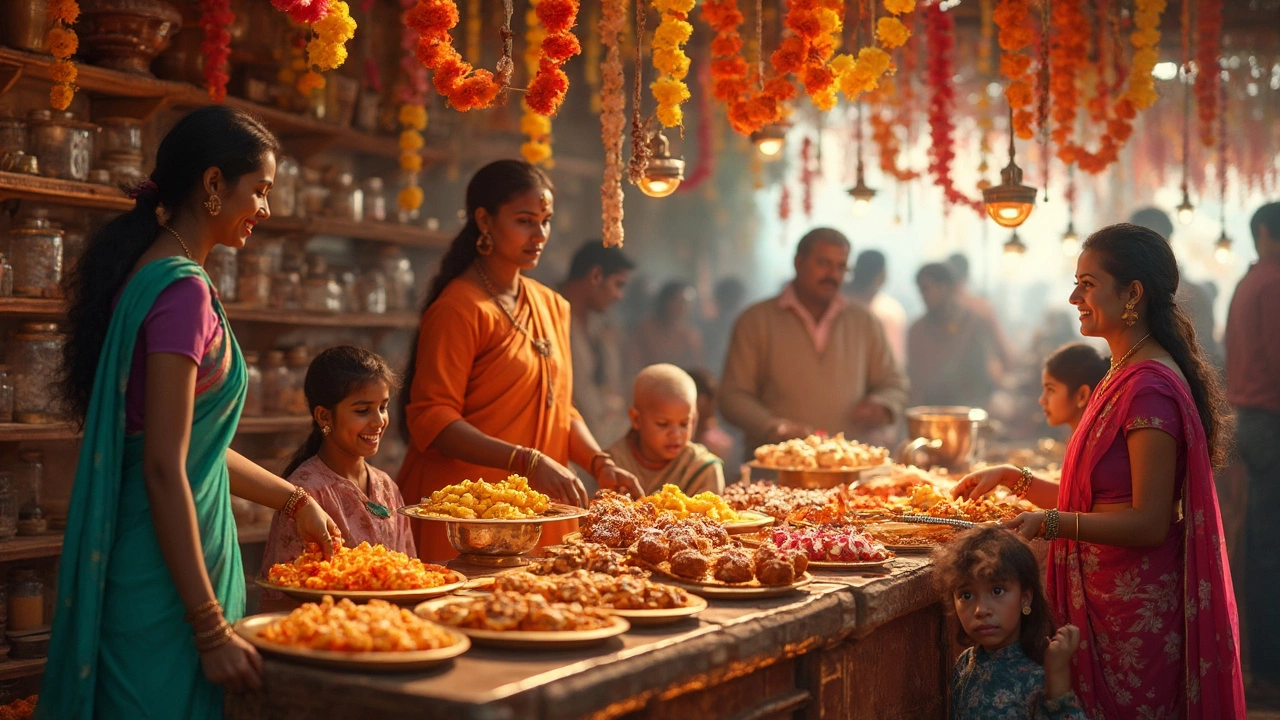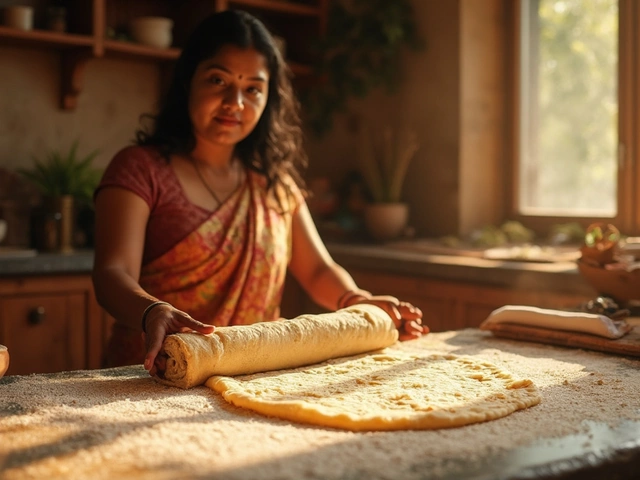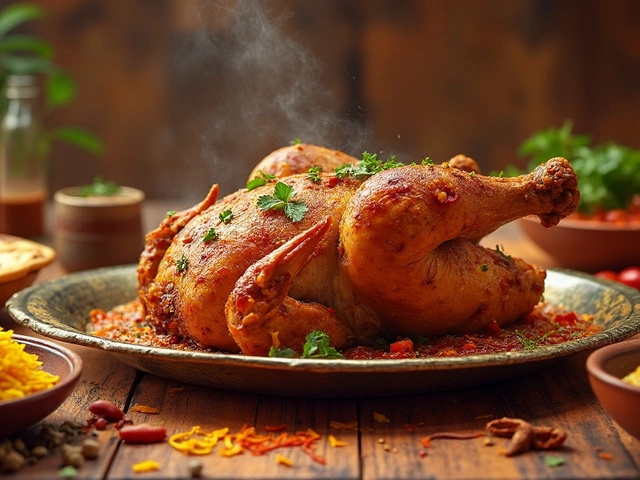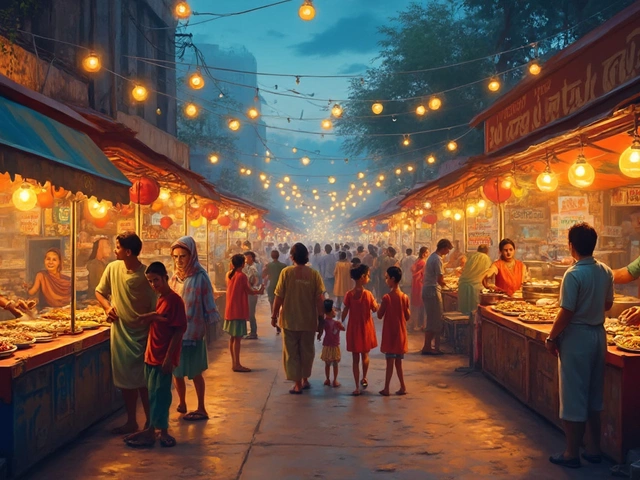If you've walked past an Indian sweet shop and caught a whiff of cardamom, fried dough, or caramelized milk, you probably get why Indian sweets grab so much attention. The range is wild—from crumbly laddoos to syrupy gulab jamun and fudgy barfi. But what makes a sweet a true crowd-pleaser in India?
For most folks in India, sweets are more than a sugar rush—they're about sharing, celebration, and even daily rituals. Some are eaten with breakfast chai or handed out when a baby is born. Every region has its signature sweets, and you'll notice locals swear by their hometown favorite. If you ask a group of people their top pick, be ready for an intense (but friendly) debate.
If you want to explore what to try or even whip up some Indian sweets at home, you're in the right place. Expect bold flavors, ingredients like ghee, nuts, milk, and spices you don't usually find in Western desserts. Curious to know which ones make the top of the list, why people love them, or how you can recreate a few? Keep reading—and maybe keep some stretchy pants handy.
- Why Indian Sweets Are So Unique
- Classic Sweets Everyone Knows
- Regional Favorites and Their Stories
- Festival Sweets: What Comes Out for Special Days
- Tips for Making Indian Sweets at Home
Why Indian Sweets Are So Unique
What sets Indian sweets apart from other desserts? It comes down to a few things: ingredients, traditions, and the way sweets are tied into daily life and big milestones.
First, the flavors. Most Indian desserts use ingredients like ghee (clarified butter), cardamom, saffron, rose water, milk solids (khoya), and jaggery (unrefined sugar). You don’t see those in Western cakes or cookies much. The results? Rich taste, strong aroma, and mind-blowing texture combinations. Think spongy rasgulla, dense peda, and crispy jalebi. Even vegan or gluten-free folks get plenty of options.
Another thing: sweets (or “mithai”) are everywhere. People give them as gifts, serve them to guests, and hand them out at school prize ceremonies. No festival feels complete without a box of mixed mithai. Even Indian weddings have their own sweet “menu.” Most homes have at least one family recipe passed down through generations. That’s why there’s such strong nostalgia around specific sweets for different families.
Every state and region has developed its own signature specialties. North Indians drool over gulab jamun, while folks in Bengal can’t live without rasgulla or sandesh. Down south, payasam rules festival spreads. This regional pride means that if you’re looking for authentic Indian sweet recipes, you’ll get something new in every corner of the country.
Here are a few typical ingredients and how often you’ll run into them:
| Ingredient | Common Uses | How Often |
|---|---|---|
| Ghee | Laddoo, Halwa, Barfi | Nearly every sweet shop |
| Cardamom | Kheer, Gulab Jamun | Very frequent |
| Milk/Khoya | Peda, Kalakand, Rasgulla | Super common |
| Saffron | Kesar Peda, Rabri | Used for special sweets |
| Jaggery | Puran Poli, Chikki | Seasonal, regional |
Honestly, even the way sweets are served is different. They aren’t just desserts; they’re a big part of Indian culture's heart. That’s why popular Indian sweets aren’t just about taste—they’re about celebration, family, and memories.
Classic Sweets Everyone Knows
Walk into any Indian sweet shop, and you'll see certain Indian sweets up front, no matter the city or state. These all-time favorites pop up at weddings, festivals, and even when people just feel like treating themselves. Let’s dig into some of the most beloved ones and see why they’re everywhere.
- Gulab Jamun: Soft, deep-fried balls made from milk solids, dunked in rose-flavored sugar syrup. If you ask ten people in India about their favorite, at least a few will say gulab jamun without even thinking.
- Jalebi: This bright orange sweet is shaped like a pretzel and soaked in syrup till it’s sticky and crunchy. People often have it as a quick snack, especially with samosas and a chai on the side.
- Barfi: A dense fudge-like treat made from condensed milk, sugar, and sometimes nuts or coconut. Barfi is the “go-to” sweet box filler—there are so many flavors, from simple plain milk (khoa barfi) to pistachio, almond, or chocolatey versions.
- Laddoo: Imagine a melt-in-your-mouth ball usually made from chickpea flour (besan), semolina (sooji), or coconut. Laddoos are a mainstay at religious ceremonies and birthdays.
- Rasgulla: This one's a spongy ball, made mostly from cottage cheese simmered in sugar syrup. It started in West Bengal but now, honestly, people everywhere love it.
If you’re wondering which ones are most sold, gulab jamun, jalebi, and barfi usually stay on top. Here’s a quick view of what usually flies off the counters at a typical Indian sweets shop, based on a 2023 survey from a major chain:
| Sweets | Percent of Total Sales |
|---|---|
| Gulab Jamun | 24% |
| Jalebi | 20% |
| Barfi (all types) | 18% |
| Laddoo | 15% |
| Rasgulla | 14% |
Most of these Indian desserts are easy to find at any festival or party. But even ordinary days see people lining up for a quick box of barfi or a pair of warm gulab jamuns. There’s really no wrong time to dig in. If you want to try your hand at making any of these at home, start with barfi—it’s fuss-free and doesn’t need frying or syrup skills.
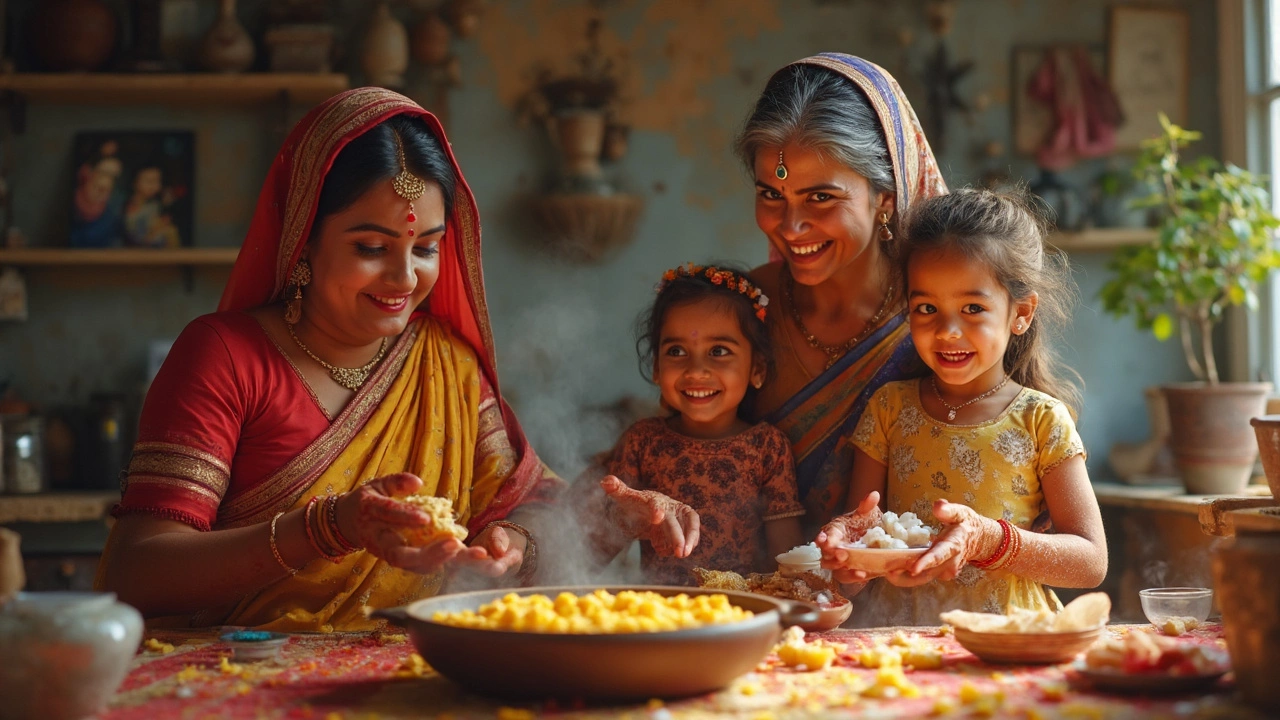
Regional Favorites and Their Stories
Indian sweets are seriously tied to geography. Each region does things differently, and the recipes often go back generations. North India loves its creamy, dairy-heavy sweets. South India goes for things like coconut and jaggery. Let’s look at a few standouts that locals swear by—and why they matter.
- Rasgulla (West Bengal & Odisha): This bouncy, syrup-soaked ball is a big deal in West Bengal and Odisha. Did you know both states once argued over who invented it? It’s mostly chenna (a type of fresh cheese) and sugar syrup. Super light but incredibly rich. Every July, Odisha even has a festival just for rasgulla.
- Mysore Pak (Karnataka): Born in the kitchens of the Mysore Palace, this melt-in-the-mouth sweet is full of ghee, sugar, and chickpea flour. It’s standard fare at South Indian weddings and honestly, folks judge a good chef by this one.
- Peda (Uttar Pradesh): Mathura—a city famous for Lord Krishna—is also known for peda: dense, milky, and loaded with cardamom. You’ll get a box of it for everything from exam results to new babies.
- Modak (Maharashtra): Shaped like little dumplings and stuffed with coconut and jaggery, modaks are offered to Lord Ganesha and pop up during Ganesh Chaturthi. Families have their own twists, but the classic steaming method stays the same.
- Sandesh (West Bengal): Another Bengali star, sandesh is fragile, made mostly of chenna and sugar, and sometimes topped with pistachio or saffron. There’s an art to making them super soft—they almost melt as soon as you bite them.
The range is huge, and honestly, every state has at least one Indian sweet it’s crazy proud of. Here’s a handy look at a few famous ones based on their region:
| Region | Popular Sweet | Main Ingredients |
|---|---|---|
| North | Soan Papdi | Gram flour, sugar, ghee, cardamom |
| East | Mishti Doi | Curd, sugar |
| West | Basundi | Milk, sugar, nuts |
| South | Payasam | Rice, milk, jaggery |
What’s wild is how these sweets reflect what’s grown locally. You’ll see a lot of coconut in coastal areas, and dairy gets all the attention up north. Some recipes are eye-wateringly rich, while others are simple but still pack a punch. Next time you try a new Indian dessert, pay attention to where it comes from—you might spot a family story or a bit of history in every bite.
Festival Sweets: What Comes Out for Special Days
If you ever visit an Indian home during Diwali, Holi, Eid, or even a wedding, you’ll see Indian sweets everywhere. Festivals in India basically mean an excuse to gather family, skip the diet, and pull out all the best sweets—some that are made just once a year. Each holiday tends to have its own signature treats, so it’s never boring.
During Diwali, the festival of lights, people go all out. You’ll find mithai like kaju katli (a shiny cashew fudge), mysore pak (ghee-rich gram flour bites), and boxes of soan papdi (soft, flaky sweets) in almost every house. Gulab jamun, those spongy milk balls soaked in syrup, make regular appearances too. For Holi, which is that super colorful festival in spring, Gujiya is king—a fried dumpling with sweetened khoya and nuts inside. Folks love their Thandai (a spiced milk drink) too, but that’s a story for another day.
Eid brings out sweet dishes like sheer korma, a creamy vermicelli pudding packed with nuts, dates, and saffron. It’s made in huge pots and handed out to neighbors and guests. Christmas and New Year aren’t left behind either—some families, especially in Goa and Kerala, have their own versions of coconut barfi and rich fruit cakes flavoured with Indian spices.
- Diwali: Kaju Katli, Laddoo, Barfi, Soan Papdi
- Holi: Gujiya, Malpua, Thandai
- Eid: Sheer Korma, Seviyan, Shahi Tukda
- Christmas: Coconut Barfi, Plum Cake (with Indian twists)
Most people cook these sweets in big batches to share with friends or offer as gifts. Local sweet shops get packed, and some neighborhoods even organize ‘sweet swaps’—kind of like a cookie exchange, just with Indian desserts.
Keeping a quick cheat sheet of famous festival sweets can help if you want to fit in at an Indian celebration, or just want to surprise someone. For reference, here’s a handy glance at which sweets are most tied to which celebrations:
| Festival | Popular Sweets |
|---|---|
| Diwali | Kaju Katli, Laddoo, Soan Papdi, Barfi |
| Holi | Gujiya, Malpua, Thandai |
| Eid | Sheer Korma, Seviyan, Shahi Tukda |
| Christmas | Coconut Barfi, Plum Cake |
Here’s a tip: if you ever get invited to one of these celebrations, show up with a box of fresh sweets—or better, try making them yourself! People appreciate the effort and you’ll get a bunch of new fans. If the recipe calls for ghee, don’t swap it out. That flavor matters. There’s a reason these Indian desserts have lasted through centuries of changing food trends.

Tips for Making Indian Sweets at Home
If you've thought about making Indian sweets in your own kitchen, you're not alone. A lot of home cooks get a bit nervous because the classics look tricky, but you don’t need a professional chef’s skills to start. The real magic is in getting the simple basics right and knowing a couple of tricks that save batches from going downhill fast.
Indian desserts lean hard on a few staple ingredients: milk, sugar, ghee (clarified butter), cardamom, nuts, and sometimes saffron. Don’t swap these for something else the first time you try a recipe—using the real stuff makes a huge difference in flavor and texture. For most sweets, full-fat milk is key, especially if you’re making milk-based treats like peda or kalakand. Trying to use low-fat milk just won’t give you that creamy taste people love so much.
- Work quickly on the stovetop ingredients. A lot of Indian sweets use simple syrups (called chashni) that can burn or overcook in seconds. Always keep watch and have everything ready before you start.
- Use a nonstick pan when possible. This helps prevent sticking, especially with sticky stuff like halwa or burfi.
- Don’t skip the nuts and flavorings. Chopped pistachios, almonds, and a pinch of cardamom are what make many mithai (another word for sweets) taste special. Lightly toasting the nuts before adding boosts flavor big time.
- Keep an eye on sugar. Traditional recipes are super sweet, but you can cut back a bit if you prefer. Still, don’t drop it too much, because the texture and shelf life get affected.
Some sweets—especially the ones that get deep-fried, like gulab jamun or jalebi—need oil at the right temperature. If it’s too hot, they get hard or burn; too cold, and they soak up oil like a sponge. I use a kitchen thermometer, but if you don’t have one, drop a small piece of dough in to test: it should sizzle and slowly rise to the top.
Here’s a quick rundown that compares cooking times and fuss level for some favorites:
| Sweets | Hands-On Time (mins) | Skill Level |
|---|---|---|
| Laddoo | 25 | Easy |
| Barfi | 30-40 | Medium |
| Gulab Jamun | 45 | Medium |
| Jalebi | 60 | Tricky |
If you’re new to Indian sweet recipes, start with an easy laddoo or coconut barfi. Both come together fast, use common ingredients, and let you skip deep-frying altogether. Once you’ve built some confidence, you can work your way to the more elaborate dishes that really wow at parties and festivals. Even my kids, Jasper and Leona, jump in to help roll balls of laddoo, so you don’t have to fly solo.
Honestly, don’t stress about making sweets picture-perfect. Indian sweets are about taste first. If something doesn’t set just right, roll it into balls or serve it as a tasty mess—no one will complain.





